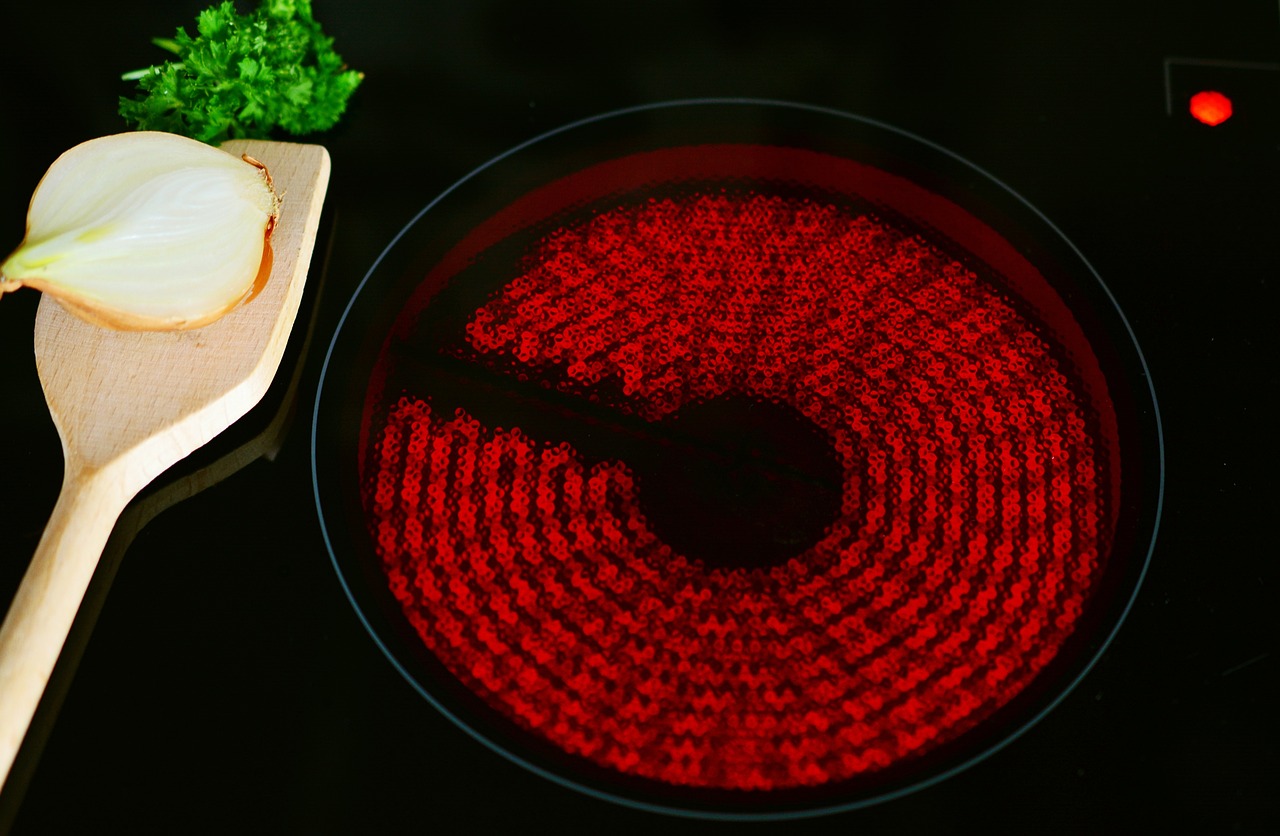Key Factors When Choosing an Electric Stove

Choosing the right electric stove for your kitchen is crucial. It impacts not only your cooking experience but also your home's energy efficiency and safety. Electric stoves offer numerous benefits, such as being more environmentally friendly and energy-efficient compared to gas stoves. They heat up quickly, simmer consistently, and are cleaner in terms of indoor pollution. Additionally, electric stoves waste less heat, making them ideal for cooking efficiently, especially during hot summer days. Understanding these factors helps you make an informed decision that suits your needs and lifestyle.
Key Takeaways
Understand the different types of electric stoves—freestanding, slide-in, and drop-in—to find the best fit for your kitchen layout and cooking style.
Look for key features like convection technology and induction cooking to enhance your cooking efficiency and precision.
Accurately measure your kitchen space to ensure the stove fits well and functions effectively without compromising on space.
Prioritize energy efficiency when selecting an electric stove to save on utility bills and contribute to a healthier home environment.
Consider the number of burners and compartments based on your cooking habits to ensure you have the flexibility needed for meal preparation.
Research the availability of service technicians in your area to ensure you can get timely repairs and maintenance for your stove.
Evaluate both the initial costs and long-term savings of electric stoves to make a wise investment for your kitchen.
Types of Electric Stoves
When choosing an electric stove, understanding the different types available can help you make an informed decision. Each type offers unique features and benefits that cater to various kitchen layouts and cooking preferences.
Freestanding Models
Freestanding models are the most common type of electric stoves. They come with finished sides, allowing you to place them anywhere in your kitchen. These models typically include a backsplash where the controls are located. GE Electric Stoves offer a range of freestanding options, such as the GE 24" Stainless Steel Free-Standing Electric Range. This compact model features four burners and a 2.9 cu. ft. oven, making it ideal for smaller kitchens. Freestanding models provide flexibility and ease of installation, making them a popular choice for many households.
Slide-In Models
Slide-in models offer a sleek and integrated look. They fit seamlessly between cabinets, with controls located at the front for easy access. This design eliminates the need for a backsplash, allowing for a more streamlined appearance. Samsung Electric Stoves are known for their innovative slide-in models, which often include advanced features and smart technologies. These stoves enhance the aesthetic appeal of your kitchen while providing high performance and convenience.
Drop-In Models
Drop-in models are less common but offer a custom-built look. They require installation into a prepared base or cabinetry, creating a seamless appearance with your kitchen counters. These models often lack a bottom drawer, which can limit storage space. However, they provide a clean and sophisticated look that many homeowners desire. Drop-in models are ideal for those who prioritize design and are willing to invest in a more permanent kitchen fixture.
Understanding these types of electric stoves helps you choose the one that best fits your kitchen layout and cooking needs. Whether you prefer the versatility of freestanding models, the sleekness of slide-in designs, or the custom look of drop-in stoves, there's an option to suit every preference.
Key Features to Consider
When selecting an electric stove, you should focus on several key features that can enhance your cooking experience and efficiency. These features not only improve the functionality of your stove but also contribute to a more enjoyable and seamless cooking process.
Convection Technology
Convection technology is a valuable feature in many electric stoves. It uses a fan to circulate hot air around the oven, ensuring even cooking and reducing cooking times. This technology helps you achieve consistent results, whether you're baking cookies or roasting a chicken. By distributing heat evenly, convection ovens prevent hot spots and ensure that your dishes cook uniformly. If you enjoy baking or roasting, consider an electric stove with convection capabilities to enhance your culinary creations.
Induction Cooking
Induction cooking represents a significant advancement in stove technology. Unlike traditional electric stoves, induction stoves heat the cookware directly through electromagnetic fields. This method offers several advantages:
Speed: According to Consumer Reports, induction cooking is the fastest cooking technology available. It eliminates the need to heat an element first, allowing you to boil water or cook meals more quickly than with gas or traditional electric stoves.
Precision: Induction stoves provide precise temperature control. You can easily adjust the heat to maintain a steady simmer or quickly reduce it to prevent overcooking.
Efficiency: Induction cooking is more energy-efficient because it minimizes heat loss. This efficiency not only saves energy but also keeps your kitchen cooler, especially during hot weather.
If you prioritize speed, precision, and energy efficiency, an electric stove with induction cooking might be the ideal choice for your kitchen.
Smart Technology
Smart technology has revolutionized the way we interact with our appliances, and electric stoves are no exception. Many modern electric stoves come equipped with smart features that offer convenience and control:
Remote Control: Some models allow you to control your stove remotely using a smartphone app. You can preheat the oven, adjust cooking settings, or monitor cooking progress from anywhere.
Voice Commands: Integration with virtual assistants like Alexa or Google Assistant enables you to control your stove using voice commands, adding a layer of hands-free convenience.
Cooking Assistance: Smart stoves often include guided cooking features, providing step-by-step instructions and automatic adjustments to ensure perfect results.
By incorporating smart technology into your electric stove, you can simplify your cooking routine and enjoy greater flexibility in managing your kitchen tasks.
Size and Space Considerations

When selecting an electric stove, size and space play a crucial role in ensuring it fits seamlessly into your kitchen. Proper measurements and understanding your kitchen's layout can help you choose the right stove that meets your cooking needs without compromising on space.
Measuring Your Kitchen Space
Before purchasing an electric stove, accurately measure your kitchen space. This step ensures that the stove fits perfectly and functions efficiently. Start by measuring the width, depth, and height of the area where you plan to install the stove. Consider any surrounding cabinets or countertops that might affect the installation.
Width: Most standard electric stoves are about 30 inches wide. This size suits smaller kitchens and provides adequate cooking space for most households. If you have a larger kitchen, you might consider a 36-inch cooktop, which offers more cooking space and flexibility.
Depth and Height: Ensure that the stove's depth and height align with your countertops and cabinets. This alignment creates a seamless look and prevents any functional issues.
Choosing the Right Size
Choosing the right size for your electric stove depends on your cooking habits and kitchen layout. Here are some considerations:
Cooking Needs: If you frequently cook for a large family or entertain guests, a larger stove with more burners might be beneficial. Double oven freestanding electric stoves cater to larger families and those who cook often, providing more cooking space and options.
Kitchen Size: In smaller kitchens, a 30-inch cooktop is ideal. It offers sufficient cooking space without overwhelming the room. For spacious kitchens, a larger range, such as a 36-inch cooktop, provides more flexibility and cooking options.
Design Preferences: Some homeowners prefer a minimalist design. A smaller range can complement this aesthetic while still offering functionality. Conversely, a larger range can become a focal point in a more expansive kitchen design.
By considering these factors, you can select an electric stove that not only fits your kitchen space but also enhances your cooking experience.
Energy Efficiency and Cost
When choosing an electric stove, energy efficiency and cost are crucial factors to consider. These aspects not only impact your monthly utility bills but also contribute to a more sustainable lifestyle.
Evaluating Energy Efficiency
Electric stoves offer significant advantages in terms of energy efficiency. They heat up quickly and retain heat well, which reduces overall energy consumption. Many models come equipped with energy-saving features like convection cooking and self-cleaning ovens. These features enhance cooking efficiency and minimize energy waste.
Induction Ranges: Induction ranges stand out as the most energy-efficient option. They are 5 to 10% more efficient than conventional electric stoves. This efficiency stems from their ability to heat cookware directly, which minimizes heat loss and speeds up cooking times.
Environmental Benefits: Electric stoves do not emit indoor air pollutants like carbon monoxide and nitrogen dioxide. This makes them a cleaner choice for your home environment, contributing to better indoor air quality.
By choosing an energy-efficient electric stove, you can enjoy faster cooking times and a healthier home environment.
Initial Costs vs. Long-Term Savings
The initial cost of an electric stove can vary based on the model and features. While some energy-efficient models may have a higher upfront cost, they often lead to significant savings over time.
Initial Investment: Investing in a high-quality electric stove with advanced features might seem costly at first. However, these stoves often come with benefits that justify the expense.
Long-Term Savings: Energy-efficient stoves can lead to substantial savings on utility costs. By reducing energy consumption, you lower your monthly bills. Over time, these savings can offset the initial purchase price.
Ease of Maintenance: Electric stoves, particularly those with smooth tops, are easier to clean and maintain. This ease of maintenance can save you time and money on cleaning supplies and repairs.
Choosing an electric stove with a focus on energy efficiency and long-term savings ensures that you make a wise investment for your kitchen and your wallet.
Additional Considerations
When choosing an electric stove, you should consider several additional factors that can impact your overall satisfaction and convenience. These considerations ensure that your stove not only meets your cooking needs but also fits seamlessly into your lifestyle.
Availability of Service Technicians
The availability of service technicians in your area is crucial when selecting an electric stove. You want to ensure that qualified professionals can repair your stove if any issues arise. Before purchasing, research local service providers and their expertise with the specific brand or model you are considering. This step can save you time and frustration in the future.
"Assessing technical knowledge and problem-solving skills is essential when evaluating service technicians," says a candidate experienced in troubleshooting electrical systems. This insight highlights the importance of having access to skilled professionals who can address any technical problems efficiently.
Number of Burners and Compartments
The number of burners and compartments on an electric stove directly affects your cooking efficiency. Consider how many people you typically cook for and the types of meals you prepare. If you often cook multiple dishes simultaneously, a stove with more burners can be beneficial.
Small Households: A stove with four burners might suffice for smaller families or individuals.
Larger Families: For larger households or those who entertain frequently, consider a stove with five or six burners. This setup provides more flexibility and cooking options.
Additionally, some stoves offer double ovens or warming drawers, which can enhance your cooking capabilities. Evaluate your cooking habits to determine the best configuration for your needs.
Type of Cooktop
The type of cooktop you choose can influence both the aesthetics and functionality of your kitchen. Electric stoves come with various cooktop options, each offering distinct advantages.
Smooth Top: Smooth top stoves provide a sleek appearance and are easy to clean. They have fewer crevices, reducing the accumulation of food debris. This type of cooktop suits those who prioritize ease of maintenance and a modern look.
Coil Top: Coil top stoves are more traditional and often less expensive. They offer durability and are suitable for those who prefer a classic design.
Induction: Induction cooktops represent a more advanced option. They heat cookware directly, offering speed and precision. If you value energy efficiency and precise temperature control, an induction cooktop might be the ideal choice.
By considering these additional factors, you can select an electric stove that aligns with your cooking style and enhances your kitchen's functionality.
When choosing an electric stove, consider several key factors to ensure it meets your needs. Evaluate the types available, such as freestanding, slide-in, and drop-in models. Focus on features like convection technology, induction cooking, and smart technology. Measure your kitchen space accurately to select the right size. Assess energy efficiency and cost implications. Consider additional factors like the availability of service technicians and the number of burners. By understanding these elements, you can make an informed decision that enhances your cooking experience and fits seamlessly into your kitchen.
FAQ
What are the main types of electric stoves?
Electric stoves come in three main types: freestanding, slide-in, and drop-in models. Freestanding models offer flexibility in placement. Slide-in models provide a seamless look with front controls. Drop-in models require custom installation for a built-in appearance.
How does convection technology benefit cooking?
Convection technology uses a fan to circulate hot air in the oven. This ensures even cooking and reduces cooking times. You achieve consistent results, whether baking or roasting, by preventing hot spots.
Why should I consider induction cooking?
Induction cooking heats cookware directly using electromagnetic fields. This method offers speed, precision, and energy efficiency. You can boil water quickly and maintain precise temperature control, making it ideal for efficient cooking.
What features do smart electric stoves offer?
Smart electric stoves include features like remote control via smartphone apps, voice command integration, and guided cooking assistance. These features enhance convenience and allow you to manage cooking tasks more efficiently.
How do I measure my kitchen space for an electric stove?
Measure the width, depth, and height of the area where you plan to install the stove. Ensure the stove fits well with surrounding cabinets and countertops. Most standard stoves are about 30 inches wide, suitable for most kitchens.
Are GE electric stoves energy-efficient?
Yes, GE electric stoves focus on energy efficiency. They heat up quickly and retain heat well, reducing energy consumption. Many models include energy-saving features like convection cooking and self-cleaning ovens.
What should I consider regarding the number of burners?
Consider how many people you cook for and your cooking habits. A stove with four burners suits smaller households. Larger families or those who entertain often might benefit from five or six burners for more cooking flexibility.
What are the benefits of a smooth top cooktop?
Smooth top cooktops offer a sleek appearance and are easy to clean. They have fewer crevices, reducing food debris accumulation. This type suits those who prioritize ease of maintenance and a modern kitchen look.
How do I evaluate the cost of an electric stove?
Consider both initial costs and long-term savings. Energy-efficient models may have a higher upfront cost but save on utility bills over time. Evaluate features and maintenance ease to ensure a wise investment.
Why is the availability of service technicians important?
Having access to qualified service technicians ensures timely repairs if issues arise. Research local service providers familiar with the brand or model you choose. This step saves time and frustration in the future.
See Also
Essential Information on Stainless Steel Electric Stoves
Three Key Tips for Choosing a 2 Burner Induction Cooktop
Best Advice for Your Freestanding Electric Range Cooker

